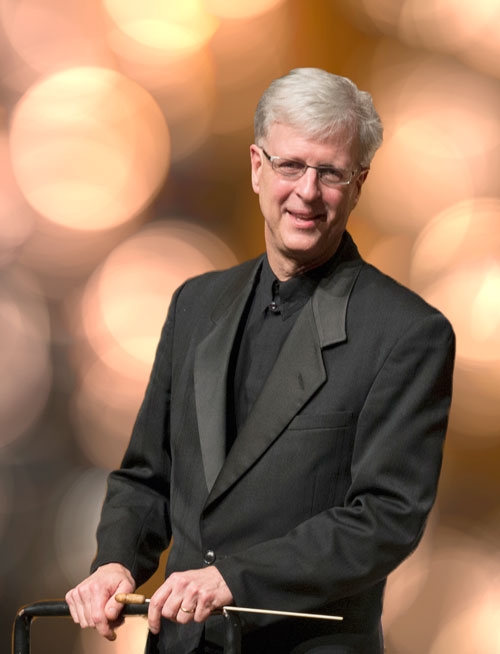When an orchestra performs a concerto — a composition featuring a solo instrument with orchestral accompaniment — one can usually expect to hear technical pyrotechnics from a violinist, a mind-boggling performance from a pianist, or even a thrilling showstopper from a woodwind player on clarinet or flute. But while many musicians view mastering a concerto as a rite of passage, some instrumentalists have more opportunities than others.
This month, the West Michigan Symphony (WMS) spotlights a rarity — a timpani concerto — during its second masterworks concert of the season. Andrew Spencer, the former WMS principal timpanist, a professor of music, and interim associate dean for the College of Communication and Fine Arts at Central Michigan University, returns Nov. 10 to perform Michael Daugherty’s timpani concerto, “Raise the Roof.” Revue chatted with Spencer to demystify the timpani and see what audiences can expect from a concerto of this kind.
How would you describe the timpani’s role in the orchestra?
A common saying is that there are two conductors: One has one stick, one has two sticks. But I do think the timpani has a unique voice. Since it’s a pitched percussion instrument, it often serves both a harmonic and sometimes melodic function within the orchestra, but it’s primarily concerned with rhythm. The other thing is that timpani can add a wide variety of tone colors depending on which mallets you’re using. I’ll change up the mallets depending on the section I’m playing with. For example, if I’m playing with the brass, I’ll use a mallet that adds a brighter sound.
How does the timpani work? What are the basics?
What you have is a single-headed drum, and the head is stretched across the bowl of the drum. It’s stretched tight enough that when you strike it, it vibrates. Now, the tighter it’s stretched, the higher the pitch goes. Timpani players press down on a foot pedal to tighten the head and therefore raise the pitch. Conversely, when you bring your toe up on the pedal, you relax the tension on the drum head, and the pitch goes down. That technique is used to a considerable extent in the “Raise the Roof” concerto. Almost every passage has me moving my feet around and changing pitches on multiple drums.
Let’s talk “Raise the Roof.” How rare is it for a timpanist to have the opportunity to play a concerto?
Well, I’m not going to lie — we’re not exactly in the violin and piano league of concerti. There are a handful of contemporary concerti out there, written by composers like William Kraft. There is evidence of timpani concerti being written way back in Baroque era, but nothing major appeared through the 1900s. Into the 20th century, we see a couple pieces come up, especially when mechanics of the foot pedal became modernized, and the ability to change pitch became much more reliable. Then composers started getting more comfortable writing for an instrument that was now melodically interesting.
What are some of the technical fireworks the audience will be treated to during the piece?
Well, I have to wiggle my hands real fast. (Laughter) There are a few times, especially during the extended cadenza, where your hands are moving awfully fast and you’re also changing pitches at the same time. So that’s pretty exciting. There are some unique features in this concerto. There are passages where I play the drums with my hands, brushes and even a maraca stick toward the end. It’s a really rambunctious piece, with some fun rhythms. For example, the last quarter of the piece is based on a Cuban dance rhythm called the Guaguancó. There’s also many great moments for the orchestra — it opens with a tuba solo for crying out loud! I love playing this piece. Audiences always react very positively, and it’s not going to leave the repertoire any time soon.
How does it feel to be in front of the orchestra instead of the back for once?
Funny you ask that, because the composer’s intention was to have the timpanist play out of its usual spot in the back of the orchestra. But the first time I played this concerto, we went through the logistics of moving the drums up front and it worked out. But it’s kind of neat being up front. Like any performing musician, you like to be onstage. And you like your mom to see you, right?
Enigma Variations
Frauenthal Theater
425 W. Western Ave., Muskegon
Nov. 10, 7:30 p.m., $22-$54
westmichigansymphony.org, (231) 726-3231





